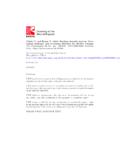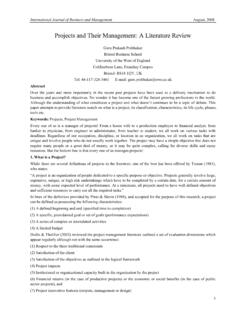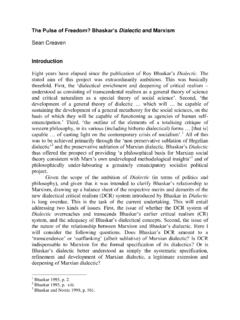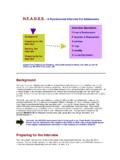Transcription of Social pressures and health consequences associated with ...
1 Social pressures and health consequences associated with body hair removal. Body depilation defined as the reduction or removal of body hair from the neck down is not a new phenomenon. The practice of depilation for artistic, medical and cultural reasons has fluctuated throughout the ages and across civilisations (Ramsey et al, 2009). However, recent years have seen a marked increase in body hair removal among both women and men (reference), with a greater and younger proportion of the Western population going to multiple, extraordinary and sometimes painful lengths to remove body hair in pursuit of a hairless, heavily groomed body.
2 This article explores hair removal practices among women and the health consequences associated with depilation. It also discusses the Social meaning of hair removal from different body parts, and reflects on the source and impact of pressures on women to be hairless, with particular consideration of how this makes women feel about their bodies. Hair growth and removal During puberty, the growth of underarm and pubic hair is a well- recognised secondary sexual characteristic. As the body matures, hair on the legs, arms and other parts of the body can lengthen, thicken and darken to varying degrees.
3 Although body hair is physiologically natural and an indicator of sexual maturity, visible body hair, certainly for Western women, is regarded as unacceptable. Its removal, particularly of dark or long hair, is virtually compulsory. Leg and underarm hair removal is particularly ubiquitous among Western women; it is a relatively long-standing unquestioned cultural norm considered to be a natural part of good grooming. More than 90% of women in UK, Australian and US surveys reported regular depilation, typically by shaving, waxing, or using hair removal creams (Terry and Braun, 2013).
4 Pubic hair becomes a problem for women when it enters the public domain' ( from the sides of a bikini) (Braun et al, 2013), and shaving and trimming of the bikini line tends to be dictated by choice of swimwear, underwear and sportswear. As these have become more revealing, removal rates of bikini-line hair are high: between 50 and 100% of women surveyed reported removing bikini-line hair (Terry and Braun, 2013). Norms around the removal of pubic hair within the bikini line are less concrete; however, evidence suggests a rapid increase in full pubic hair removal since the 1980s The percentage of women removing most or all of their pubic hair varies between studies and depends on the age of those investigated.
5 Some 32 64% of women remove most or all of their pubic hair, typically by shaving and waxing, or using electrolysis or lasers, with younger women more likely to remove their pubic hair. Herbenick et al (2010) found that 58% of women aged 18 24 years, compared to 11% of women aged over 50 years, practise pubic depilation. Moreover, health professionals have reported that it is unusual to examine women under the age of 30 years who have all their pubic hair There is comparatively little research investigating pubic hair removal practices among younger adolescents, with the exception of anecdotal evidence and concerned reports from medical practitioners (including those called on to manage associated health problems), who have seen increasing 1.
6 Numbers of girls aged 11 and 12 years removing their pubic hair soon after they begin to develop it (Trager, 2006). This is an observation that Terry and Braun (2013: 604) suggest reflects the lack of room women have to question or understand these (hair removal) norms before they must begin practising them'. health consequences As well as being costly, body hair removal is associated with several risks that are rarely discussed or disseminated in public health arenas. Electrolysis and laser hair removal (procedures often considered low risk) can cause irritation, scarring and pigmentary changes.
7 The use of razors is associated with burns, nicks and cuts, ingrown hairs, infections such as methicillin-resistant Staphylococcus aureus (MRSA), and contact dermatitis (either from shaving or aftershave products). Moreover, both shaving and waxing can cause trauma to the hair follicle and increase the risk of both folliculitis (infection of the hair follicle) and the development of extremely painful follicular pustules that require antibiotic therapy. The desire for hairlessness is reflected in the observation that women with folliculitis will often continue to shave and wax despite extreme irritation (Trager, 2006).
8 Pubic hair acts as a physical protective barrier and its removal increases the risk of contracting or transmitting sexually transmitted bacterial and viral infections, including herpes simplex and the human papilloma virus (Desruelles et al, 2013). Shaving and waxing the genital area can also cause inflammation of the vulva, lead to local skin irritation, and increase the risk of impetigo. health professionals have reported that sexually active adolescents are often shocked that they have been auto-inoculating sexually transmitted infections such as Molluscum contagiosum and Condyloma acuminata by shaving' their pubic area (Trager, 2006: 117).
9 Sharp pubic hair stubble can also cause irritation for sexual partners. In addition, Social analysts have hypothesised that pubic hair removal is a contributory factor in the recent rise in demand for genital cosmetic surgery a procedure that has considerable associated health risks. Pubic hair removal, which results in the vulva becoming more visible, may increase women's dissatisfaction with their vulval appearance by facilitating negative evaluations of their genitalia in a way not otherwise possible when hair is present' (DeMaria and Berenson, 2013: 230). Appearance as a motivator The primary motivator behind the pursuit of a hairless, heavily groomed body is widely thought to be appearance-related.
10 As well as little or no body fat, narrow hips, a large bust and long legs, contemporary Western society's construction of a desirable female body includes having sleek, smooth and hairless skin. Hairlessness functions to contrast the feminine with the masculine; to be hairy is perceived to be masculine, whereas femininity is associated with a prepubescent youthfulness that is reflected in the absence of body hair (Toerien et al, 2005). The impossibility of most women achieving this ideal leaves many girls and women perpetually dissatisfied with their bodies, leading them to engage in multiple time-consuming, costly and potentially harmful beauty regimens to modify their appearance.










